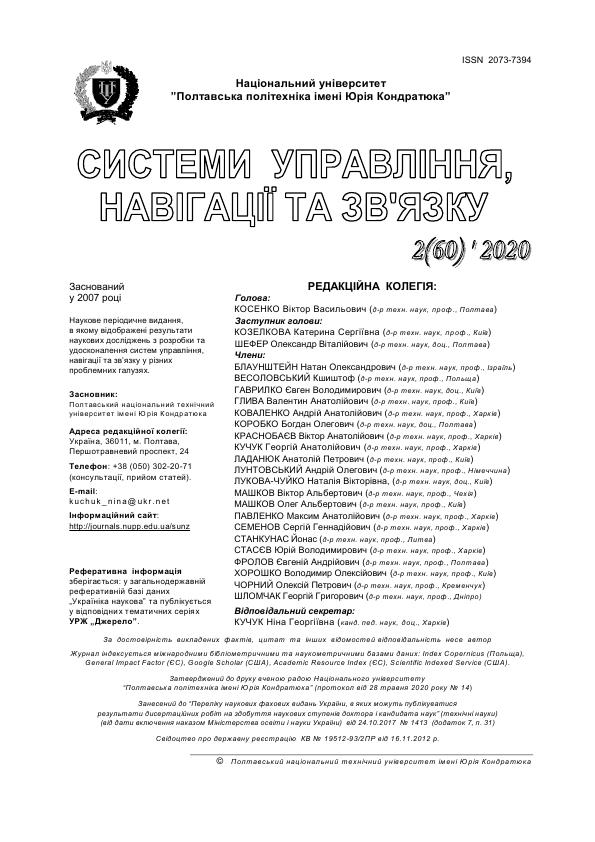COMPUTATIONAL METHODS OF DESIGN OF ELECTROMAGNETIC SCREENS WITH PREDEFINED PROTECTIVE PROPERTIES
DOI:
https://doi.org/10.26906/SUNZ.2020.2.118Keywords:
electromagnetic field, shielding, composite materials, shielding factor, electromagnetic screenAbstract
To date, most of the research and design works on the development of materials for shielding electromagnetic fields of different frequency ranges is based on experiments, and it is especially true for modern composites. It is established that there is a need to develop rational methodology for the calculation of the efficiency of materials for shielding electromagnetic fields. The purpose of this work is to provide an easy-to-use calculator for predicting the protective properties of materials for shielding electromagnetic fields, which will minimize the amount of experimental work during the design of protective structures. Based on the fundamental relationships between the electrodynamics of continuous media, the usable dependences of the shielding coefficients of metallic and composite materials on their geometric, magnetic, and electrophysical properties are provided. The equation for determining the contribution of the electromagnetic waves reflection to the total shielding factor is substantiated. This makes it possible to calculate the thickness of the electromagnetic screen based on the principles of reasonable sufficiency. It is shown that the effective use of the computational methods for evaluating the protective properties of composite materials for shielding magnetic and electromagnetic fields requires reliable experimental data on the magnetic and electrophysical properties of the most common composite materialsDownloads
References
Аполлонский С. М. Справочник по расчёту электромагнитных экранов. 1998. 224 с.
Резинкина М. М. Использование численных расчётов для выбора средств экранирования от действия магнитных полей. Журнал технической физики. 2007. Т. 77. № 11. С. 17–24.
Назаренко М. В., Гончарова О. М., Панова О. В. Розрахункові методи визначення захисних властивостей електро-магнітних екранів. Проблеми охорони праці в Україні. 2012. Вип. 23. С. 8489.
Громыко Г. Ф., Ерофеенко В.Т., Заяц Г.М. Численное исследование структуры магнитного поля в цилиндрическом пленочном экране. Информатика. 2015. № 2. С. 5−18.
Lavrova O., Polevikov V., Tobiska L. Modeling and simulation of magnetic particles diffusion in a ferrofluid layer. Magnetohydrodynamics. 2016. Vol. 52. № 4. P. 417–430.
Полевиков В. К., Ерофеенко В. Т. Численное моделирование взаимодействия магнитного поля с цилиндрическим слоем магнитной жидкости. Информатика. 2017. № 2(54). С. 5–14.
Glyva V.A., Podoltsev A.D., Bolibrukh B.V., Radionov A.V. A Thin Electromagnetic Shield of a Composite Structure Made On the Basis of a Magnetic Fluid. Tekhnichna elektrodynamika. 2018. № 4. Р. 14−18. DOI: https://doi.org/10.15407/techned2018.04.014
Glyva V., Lyashok J., Matvieieva I., Frolov V., Levchenko L., Tykhenko O., Panova O., Khodakovskyy O., Khalmuradov B., Nikolaiev K. Development and investigation of protective properties of the electromagnetic and soundproofing screen. Eastern-European Journal of Enterprise Technologies. 2018. Iss. 6/5 (96). P. 54–61. DOI: https://doi.org/10.15587/1729-4061.2018.150778
Glyva V., Podkopaev S., L. Levchenko, N. Karaieva, K. Nikolaiev, O. Tykhenko, O. Khodakovskyy, B. Khalmuradov. Design and study of protective properties of electromagnetic screens based on iron ore dust. Eastern-European Journal of Enterprise Technologies. 2018, Iss. 1/5 (91). PP. 10–17. DOI: https://doi.org/10.15587/1729-4061.2018.123622.
Демский Д. В. Метод расчета эффективности экранирования для неоднородных электромагнитных экранов: дис. … канд. техн. наук: 05.12.14 / Демский Дмитрий Викторович. М., 2014. 114 с.
Коваленко В. В., Глива В. А., Тихенко О. М., Лук’яненко С. О. Розрахункові методи визначення захисних властивостей електромагнітних екранів у дальній зоні електромагнітного поля. Системи обробки інформації. 2016. № 7 (144). С. 55–57.




